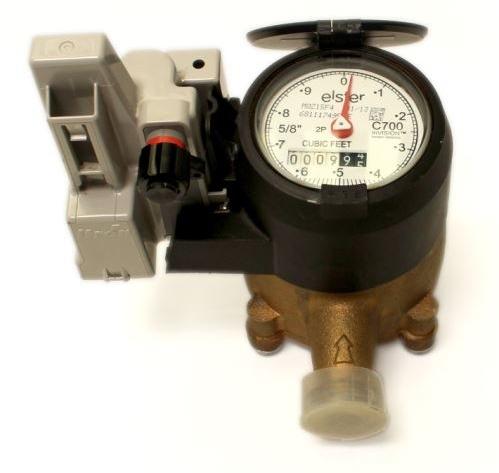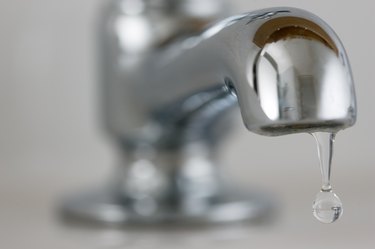Easy Steps to Improve Low Water Pressure in Your Home
Easy Steps to Improve Low Water Pressure in Your Home
Blog Article
Just how do you actually feel when it comes to Dealing with Low Water Pressure in Your Home?

Low water pressure in your house can be an aggravating trouble, affecting whatever from bathing to washing recipes. If you're experiencing weak water circulation, there are a number of feasible causes and services to explore. In this overview, we'll review typical reasons for low water stress and practical steps to resolve the problem efficiently.
Intro to Low Water Pressure
Low tide stress occurs when the flow of water from your taps, showers, and other components is weak than common. This can make everyday tasks much more challenging and much less reliable. Comprehending the root causes of low water stress is important to discovering the appropriate service.
Usual Causes of Low Water Pressure
Pipeline Obstructions
With time, pipes can become obstructed with mineral deposits, sediment, or particles, restricting the circulation of water. This is a common concern in older homes with galvanized steel pipes.
Corrosion
Deterioration within pipes can bring about leakages and reduced water stress. Corrosion accumulation can restrict water flow, specifically in maturing plumbing systems.
Faulty Pressure Regulatory Authorities
Stress regulators are accountable for maintaining constant water stress in your house. If they malfunction, it can cause low tide pressure or uneven circulation throughout the house.
Municipal Supply Of Water Issues
Often, the problem lies outside your home. Metropolitan water system concerns, such as main line leaks or upkeep job, can briefly decrease water stress in your area.
Exactly How to Detect Low Water Stress
Inspecting Taps and Fixtures
Begin by testing the water stress at various faucets and fixtures throughout your home. If the concern is separated to certain locations, it may show local troubles.
Examining Pipelines
Check visible pipelines for signs of leaks, corrosion, or blockages. Take notice of any unusual noises, such as knocking or rattling pipes, which could suggest concerns within the plumbing system.
Consulting with a Plumber
If you're incapable to pinpoint the reason for low water pressure, take into consideration employing a specialist plumber to conduct an extensive inspection. They can determine underlying concerns and recommend appropriate remedies.
Do It Yourself Solutions to Deal With Low Water Pressure
Cleaning Aerators and Showerheads
Natural resources can accumulate in aerators and showerheads, lowering water flow. Get rid of and cleanse these elements regularly to boost water stress.
Flushing Water Heater
Debris accumulation in the water heater can limit circulation and minimize effectiveness. Purging the tank regularly assists eliminate sediment and maintain optimal efficiency.
Inspecting Stress Regulator
Ensure that the pressure regulator is operating properly. Changing or changing the regulator can help restore proper water stress throughout your home.
Cleaning Clogs in Water Lines
For small obstructions, try using a plumbing serpent or chemical drainpipe cleaner to clear obstructions in pipes. Be cautious when utilizing chemicals and adhere to security standards.
When to Call a Specialist Plumber
If do it yourself initiatives fall short to fix the problem or if you think significant plumbing problems, it's best to seek support from a licensed plumber. They have the proficiency and devices to deal with complex problems safely and efficiently.
Safety Nets to Keep Water Pressure
Regular Upkeep
Arrange regular upkeep for your plumbing system to avoid problems such as deterioration, leakages, and obstructions. Dealing with small problems early can assist stay clear of more substantial repair services later on.
Mounting a Pressure Booster
Think about installing a pressure booster pump to improve water pressure in locations with continually reduced flow. This can be particularly helpful for multi-story homes or residential or commercial properties with high-demand fixtures.
Surveillance Water Use
Be mindful of water use practices and avoid ill-using the plumbing system. Straightforward changes, such as incredible showers and washing lots, can help preserve appropriate water stress.
Verdict
Dealing with low water pressure can be discouraging, yet recognizing the underlying reasons and applying ideal solutions can restore optimal circulation throughout your home. Whether it's cleansing aerators, inspecting pipelines, or consulting with a plumber, taking aggressive actions can make sure a stable supply of water for your day-to-day requirements.
FOUR WAYS TO FIX LOW WATER PRESSURE NOW
Turning on a shower or faucet only to find the water comes out in a sad, slow drizzle is never a good feeling. How exactly are you supposed to wash a pan or take a quick shower when it takes 10 minutes just to rinse off a little soap? The good news is that when your water pressure is bad, there's always a cause: typically one that can be easily fixed. Here are some of the most common causes of low pressure and what you can do to fix the issue:
DEBRIS AND MINERAL DEPOSIT BUILDUPS
If you notice low water pressure from just one or two of the fixtures in your house, the problem likely has to do with debris buildup. Water is full of minerals and other debris, all of which can accumulate in your pipes and on your fixtures. This can cause a blockage that affects how much water flows through. To fix this, try filling a small plastic bag with white vinegar, and use a rubber band to hang it around your showerhead or faucet. Let the head of the fixture soak for a few hours, and the vinegar should loosen the deposits.
WATER LEAKS
Leaks are another common cause of low water pressure. If water is flowing out of your plumbing through a hole or crack before it can reach your fixture, the pressure coming out of the faucet or showerhead will be lower. A plumbing professional is your best bet for finding and repairing a leak in your water supply pipes.
Leaks are another common cause of low water pressure. If water is flowing out of your plumbing through a hole or crack before it can reach your fixture, the pressure coming out of the faucet or showerhead will be lower. A plumbing professional is your best bet for finding and repairing a leak in your water supply pipes.
FOUR WAYS TO FIX LOW WATER PRESSURE NOW
Turning on a shower or faucet only to find the water comes out in a sad, slow drizzle is never a good feeling. How exactly are you supposed to wash a pan or take a quick shower when it takes 10 minutes just to rinse off a little soap? The good news is that when your water pressure is bad, there's always a cause: typically one that can be easily fixed. Here are some of the most common causes of low pressure and what you can do to fix the issue:
DEBRIS AND MINERAL DEPOSIT BUILDUPS
If you notice low water pressure from just one or two of the fixtures in your house, the problem likely has to do with debris buildup. Water is full of minerals and other debris, all of which can accumulate in your pipes and on your fixtures. This can cause a blockage that affects how much water flows through. To fix this, try filling a small plastic bag with white vinegar, and use a rubber band to hang it around your showerhead or faucet. Let the head of the fixture soak for a few hours, and the vinegar should loosen the deposits.
WATER LEAKS
Leaks are another common cause of low water pressure. If water is flowing out of your plumbing through a hole or crack before it can reach your fixture, the pressure coming out of the faucet or showerhead will be lower. A plumbing professional is your best bet for finding and repairing a leak in your water supply pipes.
Leaks are another common cause of low water pressure. If water is flowing out of your plumbing through a hole or crack before it can reach your fixture, the pressure coming out of the faucet or showerhead will be lower. A plumbing professional is your best bet for finding and repairing a leak in your water supply pipes.
A VALVE ISSUE
If you have low water pressure throughout your home, check your main shut-off valve to make sure it's completely open. You may also want to see if there's a pressure-reducing valve installed. If there is, have a plumber help you adjust the settings to get the pressure you're looking for.
OTHERS USING WATER
Believe it or not, your low water pressure could be caused by your neighbors. If you notice low pressure at certain times of day, it may be because you and the people living next to you have similar schedules - when everyone is showering at the same time, the pressure will be lower in every home. Low pressure throughout the neighborhood may also be caused by an issue with your municipal water supply. If that's the case, call the supplier to see if they're working on the issue.
https://www.rotorooter.com/blog/water-leaking/low-water-pressure-fixes/

Do you enjoy reading up on 9 Reasons for Low Water Pressure in Your House? Try to leave a comment further down. We would be delighted to listen to your opinions about this blog post. We hope to see you back again later on. Are you aware of anybody else who is occupied with 10 Reasons for Low Water Pressure in Your House? Feel free to share it. Kudos for your time. Return soon.
Book Inspection Report this page